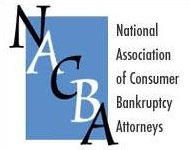
Contributions to an employer-sponsored retirement plan going forward are excluded from disposable income in Chapter 13, says the 9th Circuit in Sadana, 19 years after BAPCPA became law.
What took so long?
Words in the statute matter
Congress, in its BAPCPA-typical awkward fashion, said right there, in 541(b)(7)’s hanging paragraph, that amounts withheld for voluntary contributions to a qualified retirement plan “shall not constitute disposable income as defined in section 1325(b)(2)…”
Now, we can ponder why issues of disposable income are hanging around in the definition of property of the estate, when those contributions in the hands of the retirment plan are already excluded from the estate, but the “why” is less important than the words of the statute.
Nonetheless, in 2012 the 9th Cir. BAP in Parks focused on the placement of the hanging paragraph in 541 to conclude that it applied only to prepetition contributions to a retirement plan. The Parks court failed to address the explicit reference to section 1325(b) in 541(b)(7), much less the fact that it is subsection (a) of 1325 that conditions confirmation on the asset side of the confirmation equation.
Becoming savvy on the eve of filing
Saldana also rejected the approach of other courts that would condition deduction of voluntary contributions to the amount the debtor had contributed in the recent pass, the position advocated by the Saldana dissent. Hearkening to the language of the statute, the majority held that “debtors can exclude any amount of their voluntary retirement contributions to employer-managed plans from their disposable income calculation under Chapter 13”.
Chapter 13 becomes more attractive
The deductibility of voluntary contributions, current and prospective, should be incorporated in our analysis of the choice of chapter for our clients. Further, Chapter 13 lawyers should press debtors to participate in retirement plans offered by their employers as part of calculating disposable income as it reduces DMI dollar for dollar.
So, looking at the plain text of the statute and citing the 2005 Congress’s intent to incentivize debtors to file Chapter 13, the 9th Circuit recognized voluntary retirement contributions as a deduction in reaching monthly disposable income for Chapter 13 purposes.
Inquiry for another day
The focus here on the hanging paragraph of 541(b)(7) makes me wonder what the balance of that subsection was intended to do. This subsection was among several added, whole cloth, to 541. As Salanda points out, the corpus of qualified retirement plans are already excluded from the bankruptcy estate.
Was the subsection really intended to capture just contributions en route from paycheck to qualified plan? Unfortunately, like much of BAPCPA, there’s little legislative history to help u.
Congress didn’t go far enough
In the bigger picture, Saladana is still an example of a glass half empty, as it benefits only debtors whose employers offer a qualified retirement plan. Left out are the self employed, gig workers, and employees without a retirement option at work. Those folks will get old too.
It seems to me that retirement savings are an Other Necessary Expense for purposes of the means test. Old age is inevitable, indebted or not. Empirically, huge swaths of Americans are woefully underprepared for life beyond their working life. Yet until we recognize the essential nature of retirement savings, the bankruptcy system is favoring the interests of creditors over the financial health of debtors, and thus our society as a whole.
More
The means test & the true cost of homeownership
The phantom means test deduction







